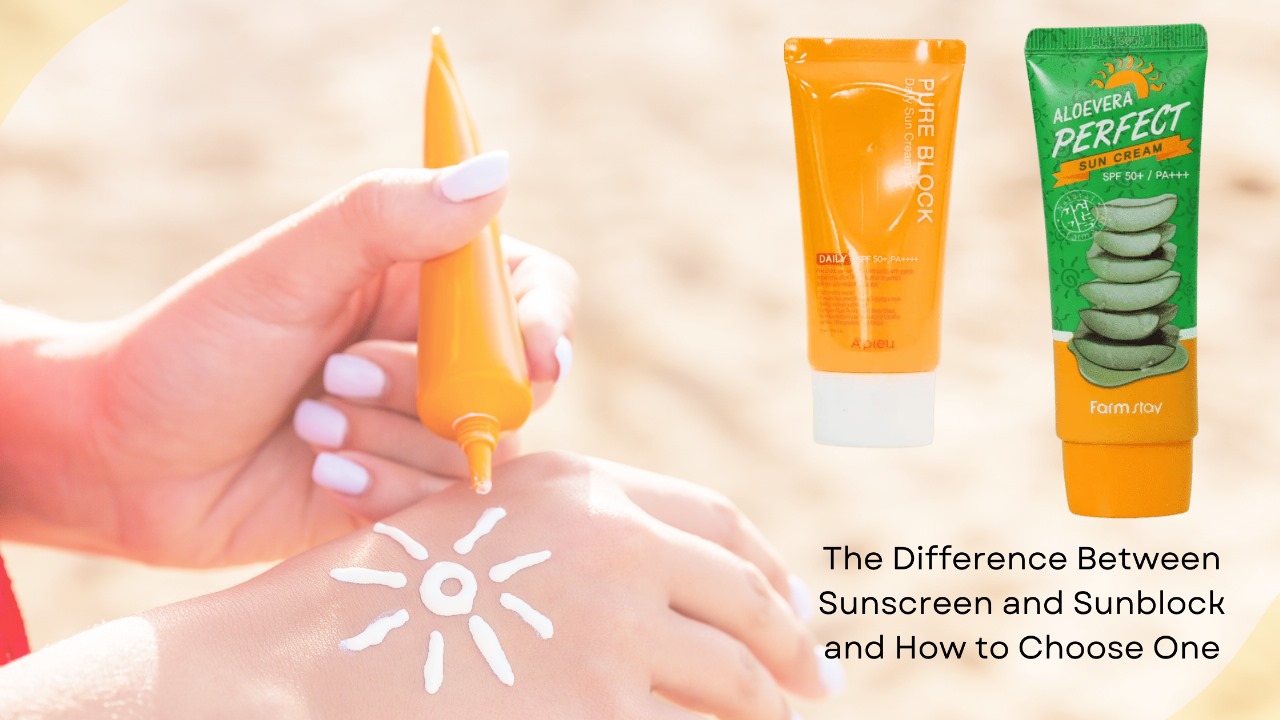The sun shines brighter and the temperature rises, so many of us rush to grab a bottle of sunscreen or sunblock as soon as possible. Many people, however, use these terms equally, because they do not realize that they serve different purposes. It is imperative to understand the differences between sunscreen and sunblock to effectively protect the skin from the sun.
What Is Sunscreen?
Sunscreen is a topical product designed to protect the skin from harmful ultraviolet (UV) rays generated by the sun. These rays can cause skin damage, premature aging, and increase skin cancer risk. Sunscreens contain chemical filters that absorb UV radiation, preventing penetration. Sunscreen active ingredients include vitamin E, dioxygen, octocrylene, and oxybenzone.
One of sunscreen's significant advantages is its lightweight texture. A majority of formulations are easily absorbed and leave no white residue, making them more suitable for daily use. Sunscreen typically comes in various forms, including lotions, gels, and sprays, allowing users to choose a formulation that best suits their preferences.
What is sunblock?
Sunblock, on the other hand, provides a physical barrier against UV rays. It typically contains mineral ingredients such as zinc oxide or titanium dioxide, which sit on the skin's surface and reflect or scatter UV radiation. This makes sunblock a more suitable choice for individuals with sensitive skin or allergic reactions to chemical sunscreens.
Since sunblock forms a protective layer on the skin, it can become thicker and leave a white cast when applied to darker skin tones. This physical barrier, however, prevents sun damage, making sunblock an ideal option for outdoor activities or prolonged exposure to the sun.
Key Differences Between Sunscreen and Sunblock
-
Active Ingredients:
- Sunscreen: Chemical filters that absorb UV rays.
- tSunblock: Mineral ingredients that physically block UV rays
-
Application:
- Sunscreen: Lightweight and easily absorbed; often preferred for daily use.
- Sunblock: Mineral ingredients that physically block UV rays
-
Skin Sensitivity:
- Sunscreen: May irritate sensitive skin due to chemical ingredients.
- Sunblock: Generally safe for sensitive skin as it uses mineral ingredients.
-
Broad Spectrum Protection:
- Both sunscreens and sunblock can provide broad-spectrum protection against UVA and UVB rays, but it's essential to check the product labels to ensure adequate coverage.
How to Choose the Right Product
Choosing between sunscreen and sunblock depends on various factors, including your skin type, activity level, and personal preferences. Choosing the right product is as easy as following these tips:
-
Consider Your Skin Type:
- If you have sensitive or acne-prone skin, you may want a mineral sunblock, as it is less likely to irritate. For oily skin, look for lightweight, oil-free sunscreens that won’t clog pores.
-
Activity Level:
- For activities such as swimming or exercise outdoors, choose a water-resistant sunscreen or sunblock. Look for products labeled as “water-resistant” for 40 or 80 minutes, which indicates they maintain SPF protection while sweating or in water.
-
SPF rating:
- Always choose a broad-spectrum product with a sun protection factor (SPF) of at least 30. An SPF rating of 50 or higher provides more protection but may lead to a false sense of security. Remember to reapply every two hours, or more frequently if swimming or sweating.
-
Daily use vs. Outdoor activities:
- For daily use, a lightweight sunscreen can provide adequate protection from casual sunlight exposure. If you're planning a beach day or a hike, consider using a more robust sunblock to ensure optimal protection.
-
Personal preferences:
- Ultimately, the most effective product is the one you use consistently. Consider the texture, scent, and formulation you prefer. Whether it’s a spray, lotion, or stick, finding a product that fits seamlessly into your routine is essential.
Conclusion
Your skin is protected from harmful UV radiation by wearing sunscreen and sunblock. It is imperative to understand the differences between these types of sun protection to make an informed decision. Your skin type, activity level, and preferences will enable you to identify the product that best protects your skin while also improving your outdoor experience. To ensure effective sun protection, it is important to apply the product regularly and reapply the product as necessary. Have a blast in the sun!


